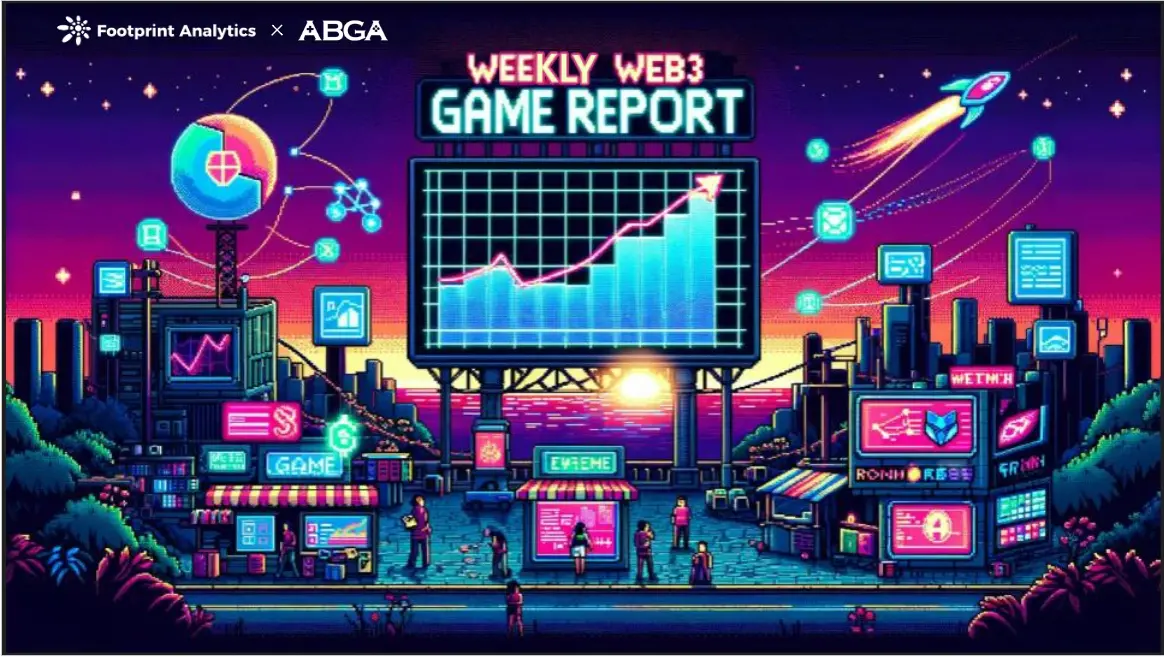Over $50 million in funding flows into Solana, investment hotspots and opportunities after Breakpoint
Author: Grapefruit, ChainCatcher
"More than 6,000 tickets were sold out, with representatives from over 114 countries and regions participating, and more than 70 Solana-related products showcasing their latest developments and actions, covering areas such as DeFi, DePIN, and Game." This is the official summary of the Breakpoint event by Solana.
At the conference, traditional financial institutions such as Franklin Templeton, Forge (a subsidiary of Société Générale), and Citibank announced their partnerships with Solana. The SOL token also performed exceptionally well during the conference, with daily gains exceeding 10%.
The large number of attendees and projects made the Breakpoint conference a focal point in the industry, becoming the hottest topic of discussion at the Token2049 conference, and was once considered the most eye-catching summit event in the crypto space this year.
Following the Breakpoint conference, a large influx of funds began to flow into the Solana ecosystem in search of new opportunities. On September 23, according to the latest cross-chain data from SolanaFloor, over $50 million in funds had crossed from various blockchain networks to the Solana network in the past week. Among them, the amount transferred from Ethereum reached as high as $34 million, accounting for nearly 70% of the total cross-chain amount.
However, for ordinary users, the focus is more on what opportunities Solana and its ecosystem offer after the Breakpoint conference and how to capture more Alpha.
Since the native projects in the ecosystem such as Pyth, Jupiter, Wormhole, and Drift have successively launched tokens and airdrops, the impression of the Solana ecosystem has mainly revolved around MEME coin speculation. However, at this Breakpoint conference, over 70 Solana-related projects participated and announced the latest developments of their products, such as Eclipse launching its mainnet at the end of October, the perpetual protocol Flash Trade launching its token FLASH later this year, and the NFT platform Magic Eden's ME token launching on Solana, among others.
New Changes in Solana: Payment Track & Blink & FireDancer
Since the beginning of 2024, the Solana ecosystem has seen a wave of hotspots, capturing the attention of the crypto market. Initially, projects like Helium Mobile sparked the DePIN concept and made it an independent track, while the wealth effect brought by the airdrop of the Solana phone Saga continued; then, under the AI wave, new decentralized GPU projects like io.net emerged one after another; in March, the emergence of the MEME coin BOME attracted a large number of users and funds to Solana in search of the next MEME coin wealth code, igniting a frenzy of on-chain MEME coin speculation, with the birth of the MEME coin issuance platform Pump.fun being particularly noteworthy, which also boosted the development of the DeFi ecosystem on Solana.
In addition to periodic surprises within the ecosystem, the Solana network has also been continuously launching new features and exploring new opportunities, although the optimization of the underlying infrastructure is not as easily perceived by users as the development of ecological applications.
At the end of January this year, Solana introduced a token extension feature that provides the possibility for traditional finance to go on-chain and opens up new opportunities in the payment track.
The Solana token extension feature allows additional functionalities to be added to tokens, enabling developers to integrate features such as privacy transfers, custom transfer logic, and transaction fees into their issued assets, providing a complete set of on-chain token service solutions for developers, enterprises, and traditional financial institutions, aiming to help businesses provide more efficient security and compliance services on the Solana network.
Kyle Samani, co-founder of Multicoin, mentioned in his speech at Token2049 that Solana's token extension feature offers many characteristics for payment companies or global major asset issuers, such as built-in yield features, confidential transfer functions (hiding sender and receiver), asset issuance and revocation functions, etc. These features are developed based on the direct needs of payment companies and Wall Street, enabling regulated traditional financial companies to achieve large-scale on-chain operations. The stablecoin PYUSD deployed by Paypal on Solana utilizes the token extension feature to provide users with "confidential transfer" capabilities.
Multicoin expects that the token extension feature will become one of Solana's signature features in the next 3 to 4 years, making Solana stand out among many blockchain projects.
Crypto stablecoin developer Paxos and financial company GMO have built their stablecoins USDP and the regulated yen stablecoin GYEN through Solana's token extension feature.
The introduction of the token extension feature accelerates Solana's development in crypto payment infrastructure and is also an important technical support for the implementation of the Payfi concept.
Additionally, at the Breakpoint conference, Solana highlighted new features such as Blink, the client Firedancer, and the introduction of ZK Compression technology, all of which are important iterative features released in the mid-year Solana 2.0 phase.
Among them, the Blinks plugin feature refers to the ability to directly convert Dapp and on-chain operations such as voting and trading interactions into shareable website links, allowing any website and page to embed these links for direct transactions. For example, on the X platform, users can include links generated by Blink in their tweets, enabling them to directly purchase tokens, make payments, donate, or vote, making transactions on the Solana chain simpler and lowering the barrier for users to enter the cryptocurrency world, while also reaching more users, allowing them to participate in cryptocurrency transactions and applications in their daily environments.
In July this year, the Solana Foundation also announced a $400,000 funding program for developers of the Blinks open-source tools to attract developers to build related tools and facilities, enhancing the ecosystem's vitality.
ZK Compression technology allows developers to utilize Solana's ledger space more economically. The application of this technology can effectively reduce the demand for on-chain storage space, thereby lowering costs and improving overall scalability. It is reported that this technology saves Solana developers about 1,000 times in costs compared to before. By adopting ZK Compression technology, the Solana ecosystem can more effectively handle large amounts of data, helping developers and users build applications on a large scale.
Firedancer is a next-generation high-performance validator client developed by market maker Jump Trading, which eliminates single points of failure and enhances the overall robustness of the network.
Multicoin stated that the Jump team applied all the knowledge and experience accumulated in building high-performance trading systems to this client, which will provide strong scalability and speed for the Solana network and accelerate the realization of Solana's vision of creating a decentralized Nasdaq.
From this perspective, the token extension feature provides traditional finance with the opportunity to go on-chain, and the collaboration with Paypal makes crypto payments a reality; Blinks is a set of development tools that facilitate developers' integration of applications, making crypto applications as user-friendly and shareable as Web2 applications; and Firedancer enhances the trading experience by improving network performance; ZK Compression primarily aims to reduce development costs for developers.
Overall, this series of actions aims to lower the development threshold for developers and the usage threshold for users, paving the way for Solana to move towards large-scale applications.
How Can Users Participate in the Solana Ecosystem?
In addition to improvements in network performance and infrastructure, Solana is also actively promoting ecological layout and project innovation. First, while developing native Web3 products such as DeFi and games on-chain, Solana is also making significant strides in areas like DePIN and Payfi.
Taking the Solana Mobile phone series as an example, this not only provides a direct distribution channel for DePIN projects, helping to solve the initial user acquisition problem, but will also become a payment center for Payfi and an important entry point into DeFi.
How can users participate in Solana's opportunities and capture more Alpha?
For users, in addition to focusing on the optimization of the Solana network itself and the benefits of the SOL token, they should also pay attention to its ecological projects and their dynamics.
At the Breakpoint conference, 75 Solana ecosystem products released their recent updates, covering areas such as payments, DeFi, DePIN, LST, RWA, and AI.
For specific details of each product, please refer to the "Breakpoint 2024: Kaito's Ultimate Alpha-Packed Summary of Product Keynotes".
In the DeFi sector, the largest decentralized stablecoin protocol on Ethereum, SKY (formerly MakerDAO), announced at Token2049 that it will launch an upgraded stablecoin USDS and governance token SKY on Solana, and will allocate 2 million SKY liquidity incentive rewards weekly to Solana DeFi protocols integrating USDS and SKY, meaning that participating DeFi users may also receive SKY token rewards.
In Solana's native DeFi projects, the DEX aggregator Jupiter has not only acquired the blockchain explorer Solana FM but also the top DEX aggregator Coinhall on Cosmos, and has introduced a new MEME coin issuance feature called Ape Mint; the perpetual protocol Flash Trade will launch its token FLASH later this year; the LST protocol Sanctum has launched a payment financial card; the lending protocol Kamino plans to release its V2 version and will introduce a new spot leverage feature in the coming weeks; and the perpetual contract platform Zeta Markets has launched the decentralized exchange ZEX, while the DEX aggregator Ranger will introduce perpetual contract features, among others.
In the stablecoin sector, the stablecoin infrastructure Perena has launched a trading platform Numeraire specifically for stablecoins; the LST protocol Solayer has announced a partnership with Open Eden to launch SUSD, a yield-stablecoin backed by RWA assets; and the stablecoin PHPC launched by the Philippine crypto exchange Coins.ph will be launched on the Solana network in the next quarter.
In the NFT and gaming sectors, the NFT platform Magic Eden's ME token will launch on Solana; the content creation platform DRiP will launch a public beta version on iOS and Android; the survival simulation game Colony will release a closed alpha version in early 2025; the NFT financial protocol Tensor has set its market fees to allocate 50% to developers and 50% to its foundation treasury; and the open-world gaming platform FrodoBots has launched a treasure hunting game called Earth Rovers, among others.
In terms of the quality of participating projects, many of the projects at this Breakpoint event are new and of average recognition, so users need to carefully review these projects from multiple perspectives when choosing.
Additionally, according to crypto data platform Rootdata, after entering September, the Solana ecosystem has publicly announced that 8 projects have secured funding, with a total fundraising amount exceeding $66 million.
Among them, the developer platform Helius and the derivatives trading platform Drift have each completed funding of over $20 million, the game MagicBlock and the on-chain mining project Ore have raised $3 million each, the smart device manufacturer Cudis has completed $5 million in funding, the creator platform DRiP has completed $8 million in seed funding, the yield optimization protocol Carrot has raised $600,000, and the edge computing open layer Gradient Network has completed a new round of funding.
For developers, they can participate in the Solana Labs incubator, Solana Incubator. The relevant person in charge stated that the Solana incubator is looking for 4 to 6 teams to join its nurturing program, including existing Solana ecosystem project teams, Web3 teams considering the Solana network, and Web2 teams integrating Web3. Currently, the incubator is in its second application period, with a deadline of October 4, and it is reported that it will provide participating teams with support including product development, design and market planning, fundraising, and venture capital support.









